Introduction
Leasing a property traditionally involves stacks of paperwork, in-person appointments, manual background checks, and endless back-and-forth with applicants. These processes not only slow down lease execution but also increase vacancy days, administrative costs, and the potential for human error. Online tenant onboarding leverages digital tools to automate and integrate each step—from application to move-in—creating a seamless, transparent journey for both property managers and renters. In this comprehensive guide, we’ll explore:
- Digital Applications & Intelligent Pre-Screening
- Instant Background, Credit & Eviction Checks
- Paperless Leasing with E-Signatures
- Automated Payment Collection & Deposit Management
- Centralized Communication & Task Automation
- Compliance, Security, and Data Accuracy
- Analytics, Reporting & Continuous Optimization
- Case Study: From Vacancy to Move-In in 24 Hours
- Best Practices for Successful Implementation

By the end, you’ll understand how end-to-end digital onboarding can cut days off your leasing cycle, improve applicant satisfaction, and free your team to focus on high-value activities.
1. Digital Applications & Intelligent Pre-Screening
1.1 Anytime, Anywhere Application Access
- Mobile-Optimized Forms: Applicants complete forms on smartphones or tablets, reducing drop-off caused by desktop-only designs.
- Adaptive Question Logic: Conditional fields only appear when relevant (e.g., pet information if the applicant indicates they have pets), shortening average completion time by up to 40%.
- Built-In Validations: Real-time checks for email format, phone number, and required fields eliminate back-and-forth for missing or invalid data.
1.2 Automated Eligibility Filters
- Income-to-Rent Ratios: Automatically calculate and flag applicants whose declared income falls below preset thresholds (e.g., 3× monthly rent).
- Blacklist/Whitelist Screening: Integrate internal “good tenant” lists or national eviction databases to fast-track proven applicants and block high-risk candidates.
- Immediate Feedback: Applicants receive instant notifications—“Application incomplete: missing pay stub” or “Congrats! You meet our basic eligibility criteria”—reducing uncertainty and follow-up inquiries by 60%.
2. Instant Background, Credit & Eviction Checks
2.1 API-Driven Background Screening
- Seamless Integration: With a single click, applicants authorize a background check, which runs across national and local records—criminal, eviction, and civil.
- Configurable Criteria: Set automated rules (e.g., no evictions within five years) so that applicants are auto-approved, flagged for review, or declined.
2.2 Real-Time Credit Reporting
- Soft vs. Hard Pull Options: Offer soft pulls for preliminary screens that don’t impact credit scores, and hard pulls for final approvals when full credit details are needed.
- Automated Decision Trees: Define score ranges (e.g., auto-approve above 700, manual review 600–700) to ensure consistent, compliant decision-making without manual intervention.
2.3 Eviction History Verification
- Cross-Jurisdiction Checks: Some platforms scan multiple counties automatically, surfacing eviction filings that manual checks often miss.
- Transparent Consents: Embed electronic disclosures and consent forms directly in the application, satisfying Fair Credit Reporting Act (FCRA) requirements.

3. Paperless Leasing with E-Signatures
3.1 Dynamic Lease Generation
- Template-Based Documents: Store customizable lease templates—state-specific clauses, pet policies, parking rules—that populate with applicant data instantly.
- Version Tracking: Every change and revision is logged, with easy rollback to prior versions.
3.2 Legally Binding E-Sign Workflow
- Simultaneous or Sequential Signing: Configure whether all co-tenants sign in parallel or one after another, speeding up execution.
- Identity Verification: Integrate SMS or email one-time-password (OTP) verification to confirm signer identity.
- Immediate Distribution: Once signed, leases are automatically emailed to all parties and archived in your property management system (PMS).
3.3 Reduced Turnaround Time
- 24/7 Availability: Tenants can sign after hours or on weekends, eliminating the need for coordinating in-person appointments.
- Average Lease Execution: Companies report moving from an average of 5–7 days down to under 24 hours.
4. Automated Payment Collection & Deposit Management
4.1 Seamless Invoicing
- Auto-Generated Invoices: System triggers invoices for first month’s rent, prorated charges, and security deposits upon lease signing.
- Multiple Payment Options: Credit/debit cards, ACH, and digital wallets accommodate tenant preferences and reduce bounce rates.
4.2 Deposit Escrow & Refunds
- Compliant Holding Accounts: Deposits are held in escrow accounts, with electronic ledger entries for full transparency.
- Automated Refund Calculations: On move-out, built-in logic calculates allowable deductions (repairs, cleaning fees) and processes refunds automatically once the unit is cleared.
4.3 Late Fees & Payment Plans
- Configurable Policies: Define grace periods, flat or percentage late fees, and installment plan options for tenants in need.
- Automated Reminders and Escalations: Notify tenants of upcoming due dates and overdue balances via email and SMS—studies show on-time payment rates climbing by 20% after implementation.
5. Centralized Communication & Task Automation
5.1 Applicant & Tenant Portals
- Unified Dashboards: Prospects track application status—“Awaiting background check,” “Lease ready to sign”—eliminating status inquiries.
- Document Repositories: Securely upload IDs, income proofs, and other supporting documents, all tagged and stored for easy retrieval.

5.2 Automated Notification Sequences
- Conditional Triggers: Send reminders if an application stalls, a signature is pending, or payment is overdue.
- Multi-Channel Outreach: Email, SMS, and in-app notifications ensure messages reach tenants wherever they prefer.
5.3 Internal Task Queues
- Priority Queues: Automatically assign high-priority applications (e.g., corporate leases) to senior team members.
- SLA Tracking: Monitor response times to ensure each step—from document review to lease approval—meets your defined service levels.
6. Compliance, Security & Data Integrity
6.1 Regulatory Adherence
- Fair Housing Act: Standardized application forms and non-discriminatory automated rules prevent unconscious bias.
- FCRA Compliance: Electronic consent texts and logs satisfy background screening regulations.
- Data Privacy (GDPR/CCPA): Provide applicants with rights to access, correct, or delete their data via self-serve portals.
6.2 Robust Security Measures
- Encryption at Rest & in Transit: Protect sensitive PII and financial data with AES-256 and TLS protocols.
- Role-Based Access Control (RBAC): Only authorized staff access tenant details, with granular permissions for viewing, editing, or deleting records.
- Immutable Audit Logs: Every action—application edits, document uploads, status changes—is timestamped and attributed to a user.
6.3 Data Accuracy & Error Reduction
- Auto-Fill & Drop-Down Lists: Standardize entries (states, income sources) to minimize typos.
- Real-Time Duplicates Check: Prevent multiple applications from the same individual or unit, reducing administrative confusion.
7. Analytics, Reporting & Continuous Optimization
7.1 Funnel Analytics
- Conversion Tracking: Measure drop-off rates at each stage—application start to completion, document upload, background check pass rate, lease signature.
- Lead Source Attribution: Identify which marketing channels yield the highest-quality applicants.
7.2 A/B Testing Onboarding Flows
- Form Field Variations: Test multi-page vs. single-page applications to optimize completion rates.
- Notification Content: Compare email subject lines or SMS templates to maximize engagement.
7.3 Ongoing Process Refinement
- Bottleneck Identification: Use real-time dashboards to spot delays (e.g., background checks taking too long) and integrate additional screening partners or faster credit bureaus.
- User Feedback Integration: Post-move-in surveys feed into workflow improvements—simplify steps that tenants consistently rate as confusing.

8. Case Study: From Vacancy to Move-In in 24 Hours
Background: A mid-sized property management firm with 500 units struggled with an average 7-day leasing cycle, leading to 5% higher vacancy rates.
Solution: Deployed an end-to-end online onboarding platform integrating application, screening, e-sign, and payments.
Results:
- Cycle Time Reduction: Average leasing time fell from 7 days to 0.8 days.
- Vacancy Rate Improvement: Quarterly vacancy dropped from 6.5% to 3.5%, boosting revenue by $120K annually.
- Applicant Satisfaction: 92% positive feedback on the onboarding experience vs. 65% previously.
- Administrative Savings: Leasing staff headcount reduced by 20%, allowing reallocation to tenant retention programs.
9. Best Practices for Successful Implementation
- Engage Stakeholders Early: Involve leasing agents, maintenance, IT, and legal teams to map requirements and address concerns.
- Phased Rollout: Start with one property type (e.g., apartments) before expanding to single-family homes or commercial units.
- Applicant Education: Provide clear how-to guides or short tutorial videos to walk prospects through the digital process.
- Mobile Testing: Ensure the platform functions flawlessly on iOS and Android devices.
- Train Staff Thoroughly: Conduct hands-on workshops and create quick-reference guides to minimize resistance and errors.
- Monitor KPIs Closely: Set weekly targets for application completion rates, time-to-lease, and customer satisfaction to track progress.
Conclusion
Online tenant onboarding transforms leasing from a drawn-out, error-prone ordeal into a streamlined, digital journey that benefits property managers, staff, and tenants alike. By automating applications, screening, lease signing, payments, and communications—and by embedding robust compliance, security, and analytics—you can reduce lease cycle times by over 80%, cut vacancy rates, and elevate tenant satisfaction. Implement these strategies with a phased, data-driven approach, and you’ll build a competitive advantage in today’s fast-paced rental market—filling units faster, operating more efficiently, and laying the foundation for scalable growth.




